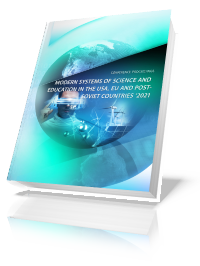PEDAGOGICAL CONDITIONS FOR THE EFFECTIVE DEVELOPMENT OF FOREIGN LANGUAGE COMMUNICATIVE COMPETENCE IN NON-PHILOLOGICAL STUDENTS OF HIGHER EDUCATION INSTITUTIONS
DOI:
https://doi.org/10.30888/2709-2267.2025-31-00-037Keywords:
communicative competence, non-philological students, foreign language teaching, higher education, pedagogical approach, digital tools, professional orientationAbstract
The article examines the process of developing foreign language communicative competence in students of non-philological majors at higher education institutions. In light of increasing demands for professional mobility and international communication, theMetrics
References
Byram, M. (1997). Teaching and assessing intercultural communicative competence. Multilingual Matters.
Canale, M., & Swain, M. (1980). Theoretical bases of communicative approaches to second language teaching and testing. Applied Linguistics, 1(1), 1–47. https://doi.org/10.1093/applin/I.1.1
Council of Europe. (2001). Common European Framework of Reference for Languages: Learning, teaching, assessment. Cambridge University Press.
Fantini, A. E. (2009). Assessing intercultural competence: Issues and tools. In D. K. Deardorff (Ed.), The SAGE handbook of intercultural competence (pp. 456–476). SAGE Publications.
Galskova, N. D., & Gez, N. I. (2006). Theory of teaching foreign languages: Linguodidactics and methodology. Academy Publishing Center. [In Russian]
Little, D. (2003). Learner autonomy and second/foreign language learning. The Guide to Language Education and Training (Council of Europe). Retrieved from https://www.coe.int
Richards, J. C. (2006). Communicative language teaching today. Cambridge University Press.
Sercu, L. (Ed.). (2005). Foreign language teachers and intercultural competence: An international investigation. Multilingual Matters.
Downloads
Published
How to Cite
Issue
Section
License
Copyright (c) 2025 Authors

This work is licensed under a Creative Commons Attribution 4.0 International License.


